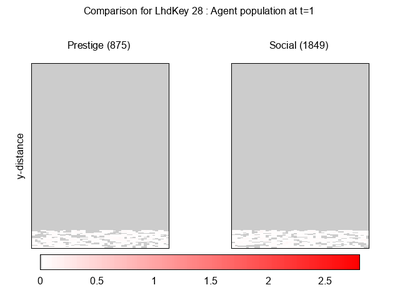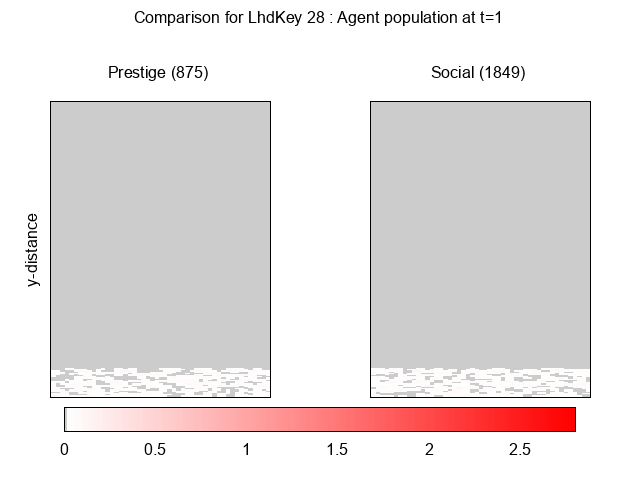Cetina ABM (1.0.0)
We provide a theory-grounded, socio-geographic agent-based model to present a possible explanation for human movement in the Adriatic region within the Cetina phenomenon.
Focusing on ideas of social capital theory from Piere Bordieu (1986), we implement agent mobility in an abstract geography based on cultural capital (prestige) and social capital (social position). Agents hold myopic representations of social (Schaff, 2016) and geographical networks and decide in a heuristic way on moving (and where) or staying.
The model is implemented in a fork of the Laboratory for Simulation Development (LSD), appended with GIS capabilities (Pereira et. al. 2020).

Release Notes
v1.2_origini_rev2 contributed here as version 1.0.0
requires LSD in the mentioned version LSD-GIS-v0.21.
Associated Publications
M Gori & F Schaff “Migration in the Cetina Phenomenon? An Agent Based Modelling Approach to Reasons for Mobility in the Adriatic Area between 2500 and 2000 BC.”, forthcoming.
Cetina ABM 1.0.0
Submitted by
Frederik Schaff
Published Feb 16, 2025
Last modified Feb 16, 2025
We provide a theory-grounded, socio-geographic agent-based model to present a possible explanation for human movement in the Adriatic region within the Cetina phenomenon.
Focusing on ideas of social capital theory from Piere Bordieu (1986), we implement agent mobility in an abstract geography based on cultural capital (prestige) and social capital (social position). Agents hold myopic representations of social (Schaff, 2016) and geographical networks and decide in a heuristic way on moving (and where) or staying.
The model is implemented in a fork of the Laboratory for Simulation Development (LSD), appended with GIS capabilities (Pereira et. al. 2020).
Release Notes
v1.2_origini_rev2 contributed here as version 1.0.0
requires LSD in the mentioned version LSD-GIS-v0.21.

